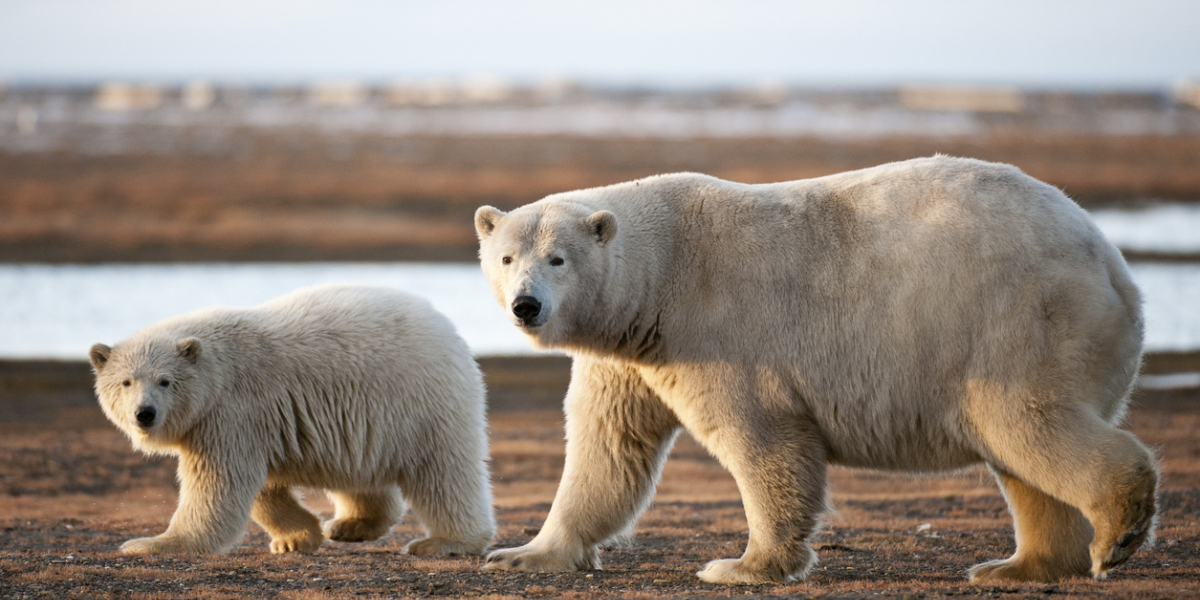
February 27, 2023
By Talha Awan & Michael Twigg
February 27th is International Polar Bear Day – providing a moment to reflect upon one of the world’s most iconic species for nature conservation. Polar bears (referred to as Nanuq in Inuktitut) have long been the focus of conservation efforts in Canada. Yet for thousands of years these animals have also represented sustenance, security, and prosperity for Inuit communities. A keystone species for Arctic biodiversity, polar bears also provide jobs, food, clothing and a sense of pride in Inuit communities. The importance of polar bear populations for the well-being of both Inuit communities and Arctic ecosystems is illustrative of conservation economies that are emerging in Indigenous communities across Canada where investments in nature are driving socio-economic development.
Since 2015, Canada has collaborated with other polar bear Range States to implement the Circumpolar Action Plan to accelerate conservation action, promote responsible harvest programs, and mitigate a growing number of threats impacting polar bear habitats. Nevertheless, a warming climate means a loss of sea ice and an increasingly accessible Arctic, both of which have resulted in the rapid decline of polar bear habitats.
For communities across Inuit Nunangat, this means that climate change is threatening an animal of great cultural and economic significance. Polar bears are an important part of Inuit language, identity, and way of life - all of which, like polar bears, are at risk of being lost. The reality is that this loss would also mean losing $15 million a year in revenue that polar bears generate for local economies, as well as an estimated $133 million in additional socio-cultural benefits for Inuit communities.
Following negotiations with the Qikiqtani Inuit Association, recent investments by the federal government have catalyzed economic activities in communities linked to Tallurutiup Imanga, illustrating the potential for Inuit-led conservation economies to act as a linchpin of sustainable economic growth. Smart Prosperity Institute (SPI), in partnership with WWF-Canada, is working to identify where investments in nature can become synonymous with socio-economic development for Inuit communities across Nunavut.
As an extension of SPI’s conservation finance approach that was launched in Ontario’s Greenbelt, we will identify pathways that can accelerate socio-economic development during the establishment of Indigenous protected and conserved areas in a way that prioritizes community needs (e.g. jobs, community infrastructure, and youth engagement) and respects cultural priorities. SPI’s work has previously shown that investing in nature can stimulate local economic development, while also providing a diversity of cost savings by improving health and well-being, and building resilience to climate change. For Inuit communities in Nunavut, the impact of investing in nature can be even greater when it results in institutions that represent the socio-cultural values of the local community.
In January this year, SPI traveled to the Hamlet of Taloyoak to meet with community leaders seeking to accelerate a growing conservation economy based on the establishment of the A’viqtuuq Inuit Protected and Conserved Area. Development priorities identified by the community included the need to tackle food and job insecurity by establishing a country food (i.e., polar bears, as well as caribou, muskox, seal, and arctic char) processing facility, using the processed hides to make textiles and clothing, hosting sport hunters, and restarting a tourism industry that has suffered since the onset of Covid-19.
Our visit to the community identified the following socio-economic priorities tied to local conservation efforts—including the management of polar bear populations—that can help drive community development in Taloyoak:
Investing in high-value, Inuit-led hunting excursions
Sport hunters will pay up to $30,000 to be outfitted in the local community and each polar bear has an estimated subsistence value of $400,000. The community has indicated a willingness to permit two outside hunters to join the hunt and learn more about Inuit culture and way of life. In turn, these rare but high-value experiences could generate close to $900,000 for the community to fund further conservation and community development programs.
Taking eco-tourists out on the land to experience local biodiversity
With the help of the local Inuit Guardians—trained experts that monitor and restore protected areas—the community can organize activities like wildlife photography, whale watching, and bird watching. The community wants to not only promote economic development but share their love for their land with visitors through these activities. With the help of local Guardians, the Boothia Peninsula showcases some of the most striking biodiversity in the Arctic. With a population of polar bears twice the size of those around Churchill, Manitoba, polar bear watching could generate similar revenues of $7.2 million annually for Taloyoak.
Connecting Inuit youth with their culture
Conservation-based economic development can also promote the transmission of Inuit traditional knowledge and language. Through conservation, Inuit youth can gain hunting and fishing skills, learn the Inuktitut names of various animals, natural features, and tools, and engage with elders that possess this traditional knowledge. A greater sense of connection with their culture will also promote youth mental health in the community.
To improve conservation efforts in the Canadian Arctic and support Inuit-led community development efforts, actions on the ground must acknowledge and respect the complex socio-cultural and economic relationships that Inuit communities have in managing their land and marine resources. Inuit-led protected and conserved areas have the capacity to institutionalize these relationships and values at the core of their governance structures.
Accelerating investments in nature will be crucial for meeting our bold biodiversity and climate targets. But these investments can also be a chance for Inuit communities in Nunavut, and Indigenous communities across Canada, to reimagine pathways for local community development that reflect key social and cultural values.
As we celebrate International Polar Bear Day, we invite our readers to consider what it will take to strengthen our commitment to conservation in Canada, while also acknowledging the importance of using Arctic biodiversity for the continued economic prosperity and socio-cultural health of Inuit communities.
To learn more about Smart Prosperity Institute’s work on conservation economies and Indigenous-led protected and conserved areas, subscribe to our newsletter.